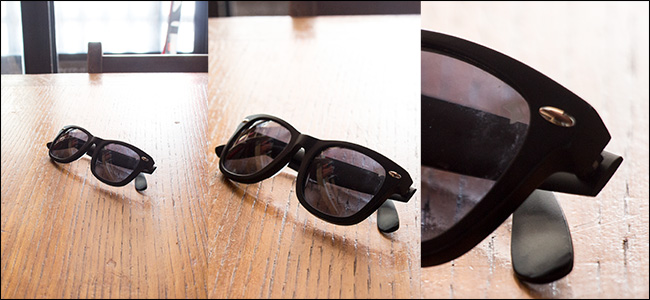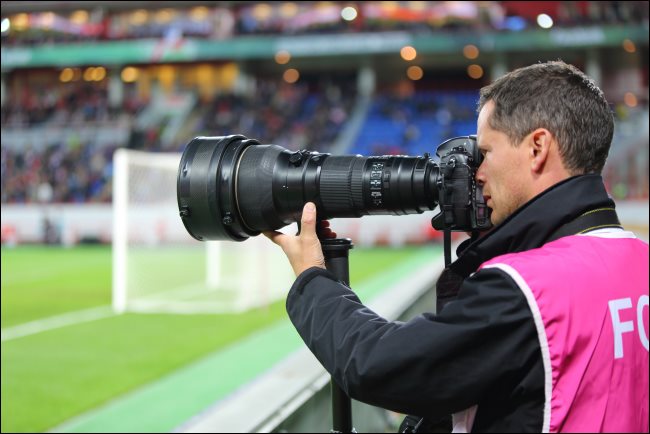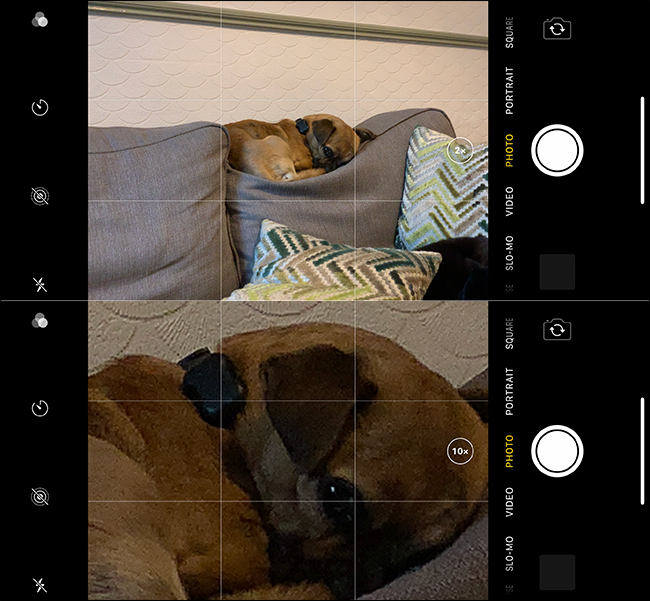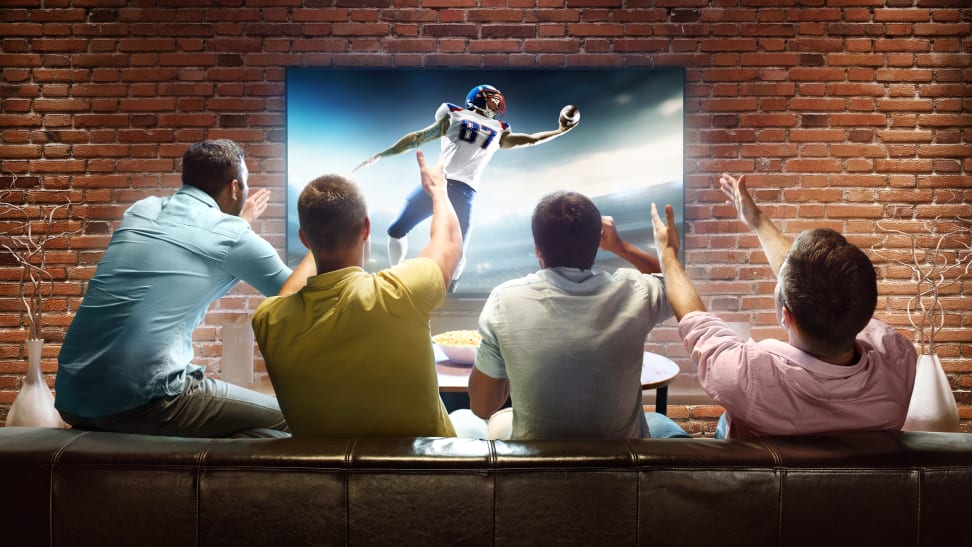
What’s the Difference Between Digital and Optical Zoom?

Zoom, like a lot of camera specs, is a bit more complicated than advertising campaigns would have you believe. Smartphone manufacturers like Samsung are now boasting 10x, 50x, or even 100x zoom. But is this even possible? Let’s look at the differences between optical and digital zoom.
What Does Zoom Actually Mean?
What is zoom, and what does it mean to have a 5x or 10x? In terms of optical physics, not a lot because there’s no such thing as zoom.
Lens magnification (how much a lens magnifies distant objects) is a function of its focal length and the resulting field of view. A lens with a longer focal length (relative to the size of the image sensor) has a smaller field of view. This makes distant objects appear closer than they would through a lens with a shorter focal length.
There are enough factors at play that lenses aren’t sold based on how much they magnify objects; rather, they’re sold based on their focal length.

Zoom, as we use it now, is basically a marketing concept popularized by compact cameras. Originally, it was the ratio between the shortest and longest focal lengths of a lens. So, a 10mm-100mm lens had 10x zoom, while a 25mm-100mm lens had a 4x zoom. This meant a lens with 10x zoom didn’t necessarily make things look 10 times bigger.
Smartphone manufacturers, however, use zoom slightly differently. A 1x zoom is broadly accepted as the field of view of the main camera. Smartphones like the iPhone 11 Pro add an even wider lens and call it a 0.5x zoom, rather than resetting 1x to the new widest angle.
Unlike with compact cameras, this means you can expect mostly the same rough magnification with different 10x-zoom smartphones.

If you want to know more, you can check out this piece on how zoom specs are calculated. All you really need to know, though, is zoom depends on the underlying focal length of a lens and the size of the sensor—and that it’s a bit disconnected from reality.
But what’s the difference between optical and real zoom (I’ll keep using this word for the sake of convenience, but what I really mean is “apparent magnification” or “narrower relative field of view”)?
How Optical Zoom Works
Optical zoom is when the physical properties of a lens genuinely magnify distant objects. For example, a telescope is all optical zoom. If you view the moon through one, it looks bigger. There’s no loss in quality—objects just appear closer.

The optical zoom comes from lenses with long focal lengths that are at least relative to the camera’s sensor size. A long telephoto lens for a DSLR, like those you see sports photographers using at games, has a focal length of between 500-1,000mm. That’s why they’re so hefty.
On smaller cameras, the focal length can be shorter. Compact cameras can get great optical zoom with 100mm lenses. They’re still pretty big, but far smaller than the telescope types used at football games.
In smartphones, manufacturers have started using periscope lenses for better optical zoom. They’ve been able to put 5x zoom lenses (roughly equivalent to the magnification of a 100mm lens on a DSLR, so pretty good) in their flagship phones without making them any thicker. This a genuinely exciting development.
However, 5x is still a long way from 100x, so, how are manufacturers getting there with their claims?
How Digital Zoom Works
As we mentioned previously, zoom is a hazy concept. Digital zoom takes full advantage of that vagueness. In essence, digital zoom is just cropping a photo so the objects in it appear larger—no additional image information is captured.
Take the shot below from an iPhone Xs, for example. This phone has a 2x optical zoom, but a 10x digital zoom. The zoomed shot has a noticeably lower resolution.
That’s the problem with digital zoom. While optical zoom magnifies without losing image quality, digital zoom reduces it. And the more you zoom in, the worse the image quality gets.
Enhance!
Digital zoom, however, is having a bit of a moment. Optical zoom is expensive, both in terms of production cost and the tradeoffs necessary to add it to a smartphone. Periscope lenses are a relatively new development (at least in smartphones), so there’s still some figuring out to do.
Thus, smartphone manufacturers are using the following tricks to make digital zoom better and minimize quality loss:
- Using incredibly high-resolution sensors: Samsung’s Galaxy S20 has a 64 MP telephoto camera. Such a high-resolution sensor means there’s more image to crop and, therefore, more digital zoom to be had.
- Pixel binning: Combining multiple pixels into a single super-pixel offers better quality on digitally zoomed-in images, rather than just cropping afterward.
- AI and machine learning: These are showing a lot of promise in the area photography. Camera manufacturers have been able to use it to automatically increase the quality of digitally zoomed-in images.
High levels of digital zoom, though, aren’t possible without optical zoom. These crazy 50x and 100x zooms are only possible because they’re a hybrid of optical and digital zoom. A real optical lens does some of the heavy lifting, while the digital techniques provide more apparent zoom.
Samsung might be pumping up its zoom numbers, but there are genuine enhancements in lens technology underlying some of the hype.
Making the Most of Zoom
The current focus on camera zoom in smartphones is interesting. At a certain point, though, it just gets silly.
A 5x or even a 10x optical zoom lens opens up a lot of interesting shooting options for people. It also makes dedicated cameras even more of a niche indulgence. With that kind of zoom, you can photograph your kids playing sports, wildlife in your back garden, and anything else you can’t physically get closer to.
While digital zoom isn’t automatically a bad thing (especially when it’s not overused), there are some downsides to zooming in too much. There’s the loss in image quality, of course, but also, photos just get harder to take.
At 20x or 30x zoom (which is roughly equivalent to a 1,000mm on a DSLR), you have to hold your phone incredibly still to get a good shot. The slightest twitch will result in a blurry photo, and whatever you’re trying to photograph moving out of frame.
That’s also assuming you’re shooting in good lighting. In low light, you’ll need a tripod for your smartphone to get anything resembling a sharp photo.
RELATED: How to remove the Google Meet button from Gmail for mobile
It looks like smartphone manufacturers are going to continue to compete with ever-increasing zoom numbers. Just make sure you always check what the underlying optical zoom is—that’s what really counts.








Leave a reply